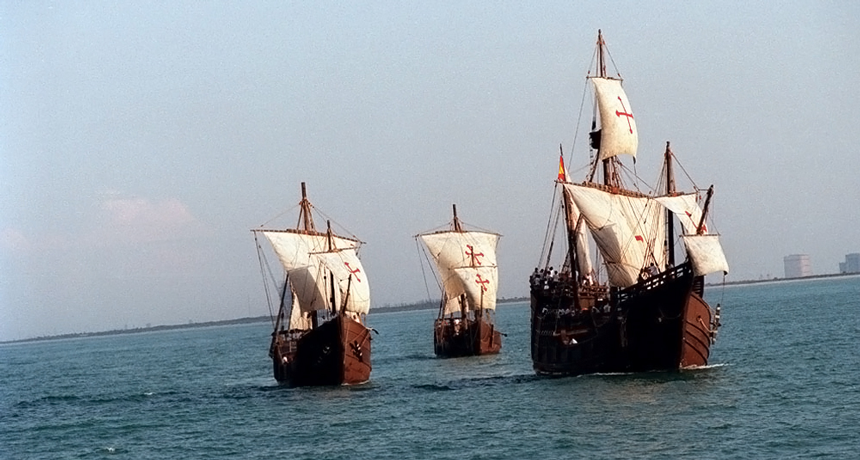Did Columbus contribute to a Little Ice Age?
Scientist shows a surprising link between the explorer and a dip in temperatures

These are replicas of the Pinta (left) and the Niña (right), two of the three ships that accompanied Columbus and his crew in 1492. Recent research finds that the explorers’ arrival in the Americas may have contributed to a cooling of temperatures known as the Little Ice Age.
NASA Marshall Space Flight Center







